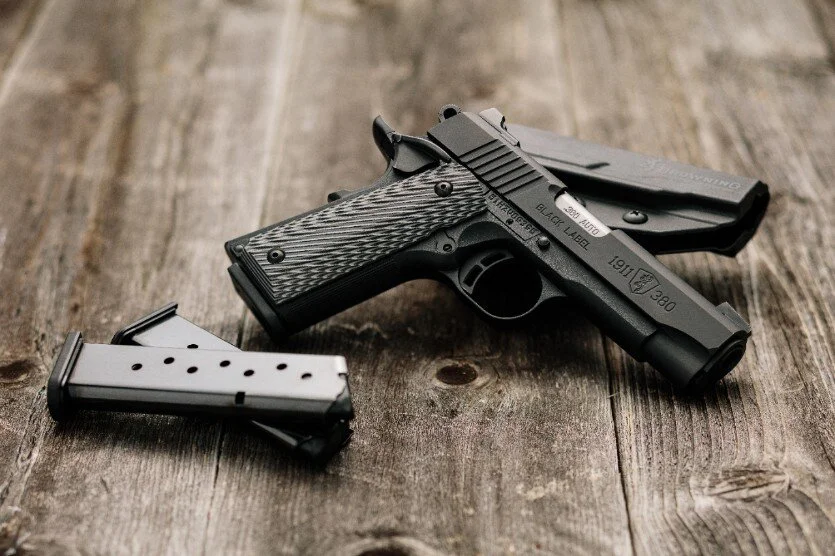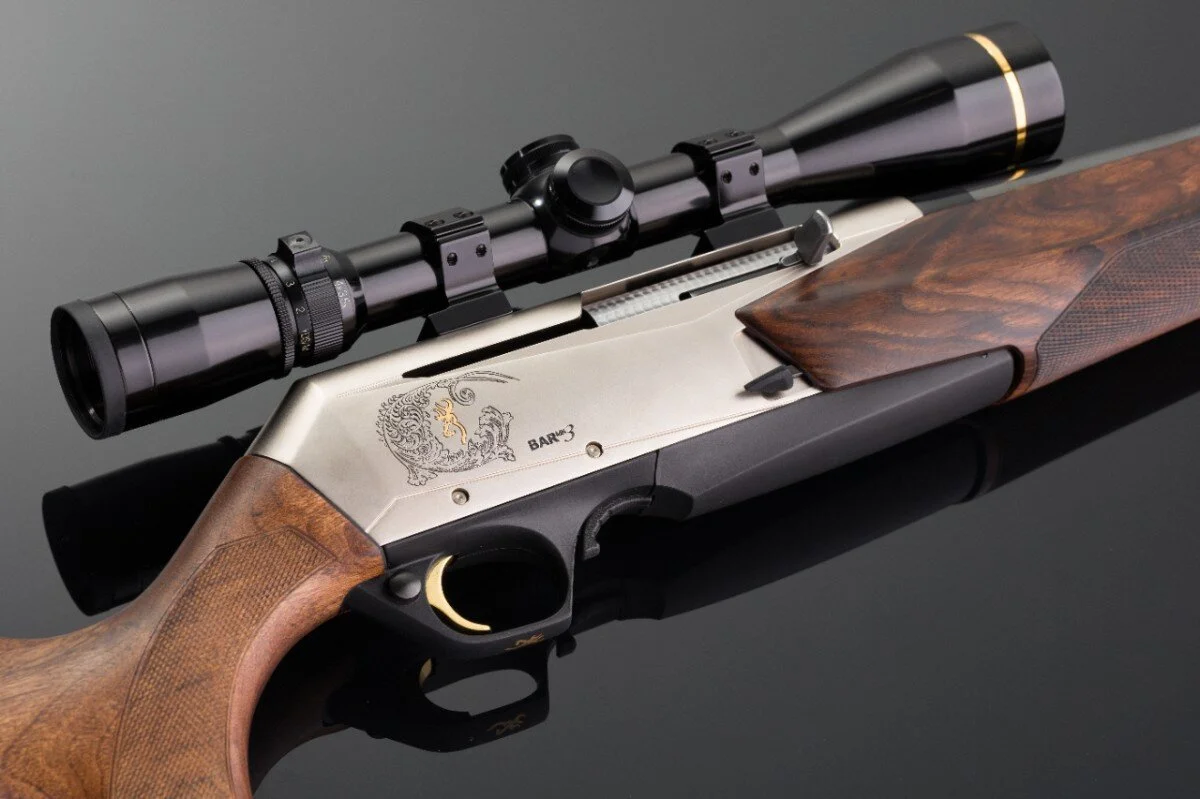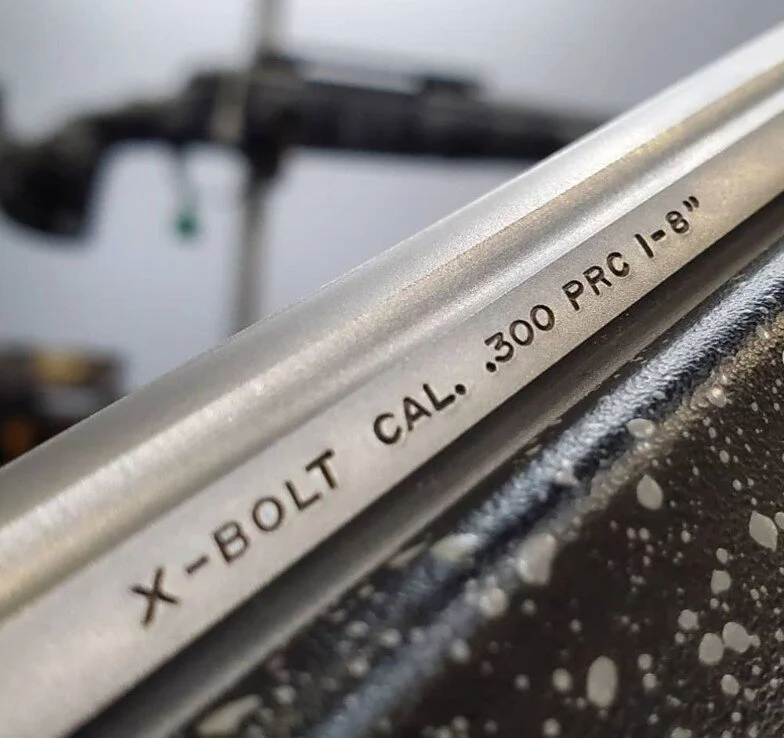4 Tips for First-time Shotgun Buyers
browning citori
The leading over and under for generations
Based on an article originally written for and posted by www.browning.com. Paraphrased and reposted with permission.
With waterfowl hunting season just around the corner, many non-hunters who are interested in hunting are thinking of buying a shotgun for the first time and heading out to a duck blind with their experienced friends. But for first-time gun owners who may not have grown up around firearms, it can be a daunting decision as to which one to get. If this is you, we’d like to welcome you into the community of gun owners with this brief overview which is intended to help give you some direction. As Browning notes, “Always seek out other resources, such as certified training, gun store experts and excellent online resources from the National Shooting Sports Foundation (NSSF) and the National Rifle Association (NRA). And always read and understand all information contained in any firearms owner's manual.” Let’s get started.
Image courtesy of Browning
Pick An Action You Are Comfortable With
over & Unders and other break barrel shotguns
Break-action shotguns always conjure up images of cowboys riding on a lone coach through the desert with a double-barreled shotgun at the ready to fend off bandits. They’re incredibly simple to use and are a great option for someone unfamiliar with firearms. Browning writes:
“With the “safety” placed in the on safe position, the action is opened by pushing a lever on the top of the receiver. You pivot the barrel(s) down to open the action, insert shell(s) into the chamber(s) then firmly close the action.
When you’re ready to fire you simply move the “safety” to the off safe position, take aim and squeeze the trigger. On Browning double-barrel shotguns with a single trigger, the trigger will automatically reset when you release it after the first shot. It then only requires another trigger pull to fire the second barrel.
To reload, you open the action, which also ejects the fired shells, and insert fresh shell(s) into the chamber(s). Close the action and you’re ready to shoot again.”
“The advantages of the hinge-action shotgun are overall simplicity and durability, ease of cleaning and their reliability...Their major limitation is you only get one shot per barrel before having to reload.”
Image courtesy of Browning
Pump-action shotguns
With reliability comparable to a break-action shotgun and the ability to hold more shells, pump-action shotguns are another great option for first-time shooters. They’re also favored as home-defense guns because they’re simple to use and make an intimidating noise when the action is “pumped”. Browning writes:
“Another popular shotgun type is the pump-action or slide-action. These are single barrel, manually-operated repeaters. The shells are loaded one by one into the magazine tube located under the barrel.
With the “safety” in the on safe position, pulling the forearm rearward, then pushing it forward loads a shell from the magazine into the barrel. With the “safety” in the off safe position, the gun will fire one shell when the trigger is pulled. The forearm is again cycled back and forward to eject the fired shell and load a fresh shell from the magazine.
The advantages of the pump-action shotgun are reliability under adverse conditions, the ability to use a variety of different ammunition types ranging from light game loads to heavy hunting shells and the ability to reload the magazine at any time. Remember, with a pump shotgun you must manually cycle the action after each shot to load another shell.”
“The advantages of the pump-action shotgun are reliability under adverse conditions, the ability to use a variety of different ammunition types...and the ability to reload the magazine at any time. ”
Image courtesy of Browning
autoloading shotguns
Auto-loaders (or semi-automatics) make great shotguns for bird hunting as they allow for quick follow-up shots. These shotguns use the force of the powder blast to eject the shell and automatically load a new one into the chamber. They can be a little finnicky at times as they are more prone to jamming than a pump-action, but if you keep them clean and in good condition (and use the correct ammunition) they have many benefits.
Image courtesy of Browning
Browning designed the first auto-loading shotgun in 1898, the Automatic 5, and has led the industry ever since. “The recoil-operated Browning A5 and the gas-operated Maxus and Silver autoloaders are all excellent candidates for anyone looking for outstanding performance and the utmost in reliability,” Browning writes.
John Moses Browning with his Automatic 5 shotgun | Image courtesy of Browning
2. Pick a Gauge You’re Comfortable With
On picking what gauge shotgun to get, Browning writes:
“Gauge is a traditional English measurement describing the diameter of the barrel. In general, the smaller the gauge number, the larger the barrel diameter. For example, a 12 gauge shotgun has a barrel that is almost ¾" in diameter, while a 20 gauge shotgun has a barrel diameter of about 6/10ths of an inch.
Naturally, a larger barrel diameter allows for a heavier payload of shot to be fired from a single shell. However, as the velocity and/or weight of the payload increase, so does the recoil or “kick” you feel when the shell is fired. Being pounded by recoil is never pleasant and even experienced shooters can develop a flinch, especially when firing many shells in a single session.
Ammunition availability, in terms of both location and variety, is broadest for the 12 gauge. You can readily purchase shells ranging from light target loads with one ounce or less of birdshot up to heavy magnum waterfowl or turkey hunting loads with twice that payload. You can also get buckshot and rifled slugs for big game hunting and home security. Naturally, the heavier and faster the payload goes out the front of the barrel, the greater the felt recoil is for the user.
Due to their smaller diameter, 20 gauge shotgun shells generally contain smaller payloads than 12 gauge shells, and generally their felt recoil is somewhat lighter. The 20 gauge often appeals to younger and smaller-statured shooters. There are still many factory loads available in 20 gauge, including birdshot, buckshot and rifled slugs.
Make sure that the shotgun ammunition you purchase is the correct gauge and length for your shotgun, which is marked on the barrel. It’s always a prudent safety practice to never mix different gauges of shotgun shells in a box, your pocket or other container.”
The Browning A5 | Image courtesy of Browning
Matching the gauge of your shells to your shotgun is extremely important. Using the wrong size shells will cause damage to your firearm and is likely to injure you or someone near you. When it comes to handling guns, attention to detail is your utmost responsibility.
“Make sure that the shotgun ammunition you purchase is the correct gauge and length for your shotgun, which is marked on the barrel. It’s always a prudent safety practice to never mix different gauges of shotgun shells in a box, your pocket or other container.”
3. Pick the Right Choke Tube
Shotguns fire small pellets, or shot (similar to a bb) in a group. A choke tube screws into the end of your shotgun barrel (also known as the muzzle) and constricts the opening to varying degrees, allowing you to either tighten or widen your shot pattern. there are 4 types of chokes: 1. Full Choke (tightest pattern, better for longer range shots) 2. Modified Choke (wider) 3. Improved Cylinder Choke (wider) 4. Cylinder Choke (Widest, no constriction at all, best for close range targets). Browning writes:
“These Browning tubes are interchangeable between Browning barrels of the same gauge that are threaded for that type of choke tube. For example, you can use a Browning 12 gauge Invector-Plus choke tube in any Browning 12 gauge barrel that is threaded for the Invector-Plus system.
However, the three different types of Browning choke tubes are not interchangeable between one another or among different gauges. For example, you cannot install a 20 gauge Standard Invector choke tube on a barrel designed for a 12 Invector-DS choke tube.
The correct type of choke tube your shotgun uses will be clearly marked on your barrel along with the gauge and chamber length.”
Choke Tubes | Image courtesy of Browning
“More open chokes let the shot pattern spread out, making it easier for you to hit fast moving targets at closer ranges.”
Two shot patterns from different choke tubes | Image courtesy of Browning
4. Understand the Law and Get Additional Training and Firearm Safety Information from a Reliable Source
Owning a firearm is a wonderful privilege, but it also comes with a great deal of personal responsibility and commitment to safety procedures. Many people are afraid to buy a gun because of the dangers associated with it. But a gun is a tool. And, just as you would with any other tool that could harm someone if mishandled, you must learn how to use it properly from an expert. Remember the 4 Universal Rules of Gun Safety:
Treat every gun as if it were loaded.
Never point the gun at something you do not intend to destroy.
Never touch the trigger until you are looking down the sights at your intended target.
Be Sure of Your Target and what is behind it.
Image courtesy of Browning
Browning lays out some other ways you can do this below:
“Make sure you comply with the firearm laws and regulations for your location and that you read and understand your owner’s manual before you store, load or use your new firearm. Take some time to do additional research on the skills you need to develop to be a safe and effective firearm owner.
Your local gun store, gun range or shooting club may offer basic and advanced classes in firearm safety, marksmanship and home protection from certified instructors. There are many good online resources available as well.
One excellent resource for both local gun laws and training is the National Rifle Association. You can learn more at https://onlinetraining.nra.org”
“Treat every gun as if it were loaded.”
Gun Safety Starts with You. Here are some more good rules to live by when handling firearms (From Browning):
Always keep the muzzle pointed in a safe direction.
Firearms should be unloaded when not actually in use.
Don't rely on your gun's "safety."
Be sure of your target and what's beyond it.
Use correct ammunition.
If your gun fails to fire when the trigger is pulled, handle with care!
Always wear eye and ear protection when shooting.
Be sure the barrel is clear of obstructions before shooting.
Don't alter or modify your gun, and have guns serviced regularly.
Learn the mechanical and handling characteristics of the firearm you are using.
One final rule of thumb when it comes to firearms: TREAT EVERY GUN AS IF IT WERE LOADED. All other safety rules flow from this one.
Learn more about firearm safety at https://www.nssf.org/safety/
















